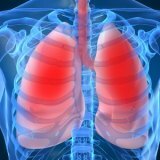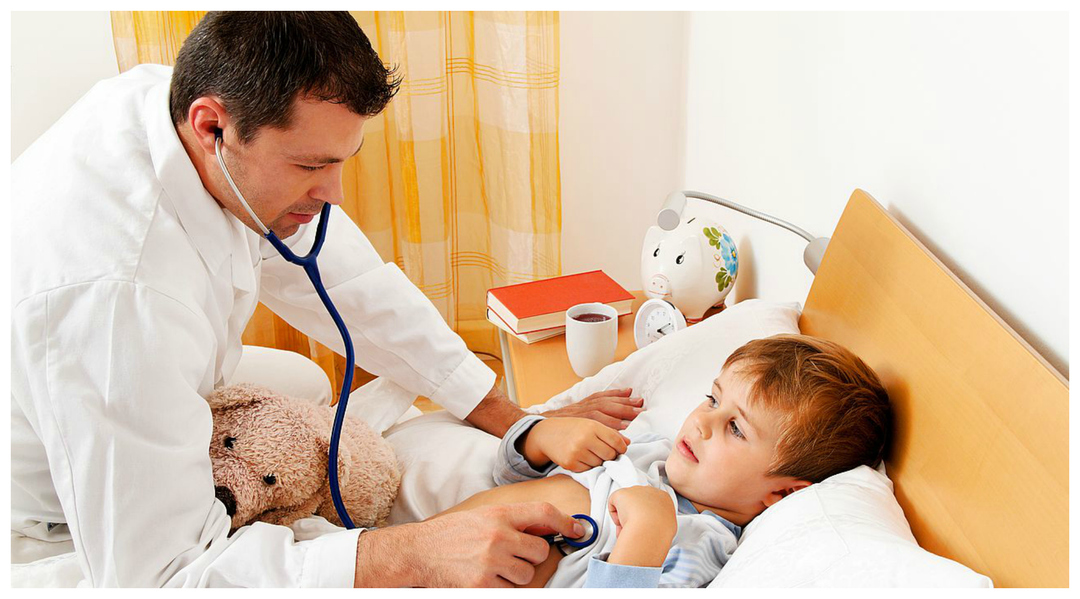Lung inflammation: a description of the disease

Inflammation of the lungs( pneumonia) is not one disease, but a vast group of different in the etiology, course and morphological characteristics of infectious inflammatory processes in the lungs with the defeat of their upper respiratory departments. The presence of an acute infectious inflammatory process is observed in the alveoli and interstitial tissues of the lungs. Based on the place of origin of the disease and the most likely spectrum of pathogens, we distinguish between "home"( out-of-hospital) and "hospital"( nosocomial) pneumonia, the description of the disease is described in more detail below.
Causes and development of
The main cause of pneumonia is the presence of bacterial and viral-bacterial infection. The leading role among pathogenic bacterial pathogens is played by pneumococci, streptococci and hemophilic rod. Recently, the number of pneumonias caused by pyogenic cocci, gram-negative rods and anaerobic microorganisms( staphylococcus, Legionella, Proteus, Escherichia coli, etc.) has increased. This is due to the widespread use of powerful antibacterial drugs, which causes dysbacteriosis and superinfection. The main pathogens of nosocomial pneumonia are staphylococci and gram-negative microorganisms. Pathogens of pneumonia can also be mycoplasmas, fungi, viruses( influenza, parainfluenza, adenovirus, myxovirus, reovirus, etc.), rickettsia and even chlamydia.
The course of pneumonia depends on the characteristics of its pathogen, the ways it penetrates and the focus of the implant, as well as on the general condition of the patient's body. More often the pathogen of infection enters the lungs by bronchogenic, less often hematogenous and lymphogenous pathways. Various factors contribute to the rapid spread of infection along the bronchial tree. This is a violation of the evacuation and secretory functions of the bronchi under the influence of microbes and their toxins, and the defeat of the bronchial ciliary epithelium.
The description of the disease will be incomplete unless one more fact is clarified. It often happens that the inflammation of the lungs is not directly related to primary infection. It can be due to a number of physical and chemical factors. This can be the effect of ionizing radiation, inhalation of poisonous substances, gasoline aspiration( development of petrol pneumonia), kerosene and oil. In such cases, the infection in the focus of inflammation gets later. Also, allergic pneumonia, which proceeds according to the type of exogenous allergic alveolitis, can sometimes develop.
Treatment of
Patients with pneumonia, as a rule, have to be treated in a hospital. This is especially necessary when the inflammation of the lungs has arisen against the background of chronic lung and bronchial diseases, as well as in old age. Patients with severe pneumonia, as well as complicated by infectious-toxic shock, respiratory, renal and cardiovascular insufficiency require treatment in the intensive care unit.
Patients are required to comply with bed rest during the entire period of intoxication and fever, but they can not lie in bed without movement. It is necessary to periodically change its position, actively cough up viscous sputum, collect it in a container with a tightly closed lid. The room in which the patient is located should be systematically ventilated. Care of the oral cavity and skin is of no small importance. Food should be consumed high-calorie, rich in vitamins, mechanically and chemically sparing. It is also necessary to drink abundantly, and the drink should only be warm. It can be mineral water, tea with raspberries, cranberry juice, milk with honey and soda. It is extremely important to monitor the work of the intestines, to avoid the development of constipation and flatulence.
Therapy mainly involves the use of various antibacterial agents. Prescribe antibiotics doctors are trying as early as possible, without waiting for the identification of the pathogen of inflammation. Antibacterial drugs should be used in average therapeutic doses. The intervals are acceptable such that in the pulmonary tissue and in the blood there was maintenance of a constant therapeutic concentration of the drug. It is not recommended at the same time to use bacteriostatic and bactericidal drugs.
Unlike any other disease, inflammation of the lungs is treated not only by medications, but also by special therapeutic physical training. Its main tool is a series of physical exercises that activate hematopoiesis and circulation of lymph that promote the normalization of pulmonary ventilation, which accelerate the process of resorption of inflammatory foci. Similar exercises are also able to prevent the formation of pleural adhesions, improve the outflow of sputum, strengthen the respiratory muscles, increase the mobility of the muscles of the chest. Together with therapeutic gymnastics, walking brings with it respiratory movements on average and at a fast pace. After the patient leaves the hospital, he is prescribed skiing, swimming, hiking, and also sports( badminton, volleyball, tennis) in a sanatorium.
It is necessary to carry out treatment until full recovery until normalization of the patient's condition, elimination of laboratory, clinical and radiological parameters of inflammation occurs. An extract from the hospital with the preservation of residual infiltration of the lung tissue and with the preservation of even minor signs of inflammation activity may threaten a relapse. In this acute inflammatory process flows into the chronic and is aggravated by the development of pneumosclerosis. Patients who suffered acute pneumonia are on dispensary observation for 6-11 months.
If the therapy is started in a timely manner and conducted rationally, the prognosis is favorable in most cases. Usually complete recovery occurs in the third to fourth week of the disease. Prolonged flow of pneumonia is usually caused by late start and wrong treatment. Also, the factors that aggravate recovery are the presence of concomitant diseases of the respiratory system, chronic infection, harmful working conditions, and smoking.
Prevention of pneumonia is based on compliance with health and hygiene principles. They include: an adequate work regime, fighting dust, airing the premises, giving up smoking, eating well, isolating infectious patients, etc. It is always necessary to conduct timely treatment of diseases accompanied by lung damage. Of particular importance is the sanation of foci of infection and hardening of the body.



